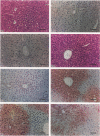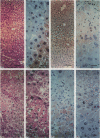Abstract
Acetaminophen overdose causes severe hepatotoxicity in humans and laboratory animals, presumably by metabolism to N-acetyl-p-benzoquinone imine: and binding to cysteine groups as 3-(cystein-S-yl)acetaminophen-protein adduct. Antiserum specific for the adduct was used immunohistochemically to demonstrate the formation, distribution, and concentration of this specific adduct in livers of treated mice and was correlated with cell injury as a function of dose and time. Within the liver lobule, immunohistochemically demonstrable adduct occurred in a temporally progressive, central-to-peripheral pattern. There was concordance between immunohistochemical staining and quantification of the adduct in hepatic 10,000g supernate, using a quantitative particle concentration fluorescence immunoassay. Findings include: 1) immunochemically detectable adduct before the appearance of centrilobular necrosis, 2) distinctive lobular zones of adduct localization with subsequent depletion during the progression of toxicity, 3) drug-protein binding in hepatocytes at subhepatotoxic doses and before depletion of total hepatic glutathione, 4) immunohistochemical evidence of drug binding in the nucleus, and 5) adduct in metabolically active and dividing hepatocytes and in macrophagelike cells in the regenerating liver.
Full text
PDF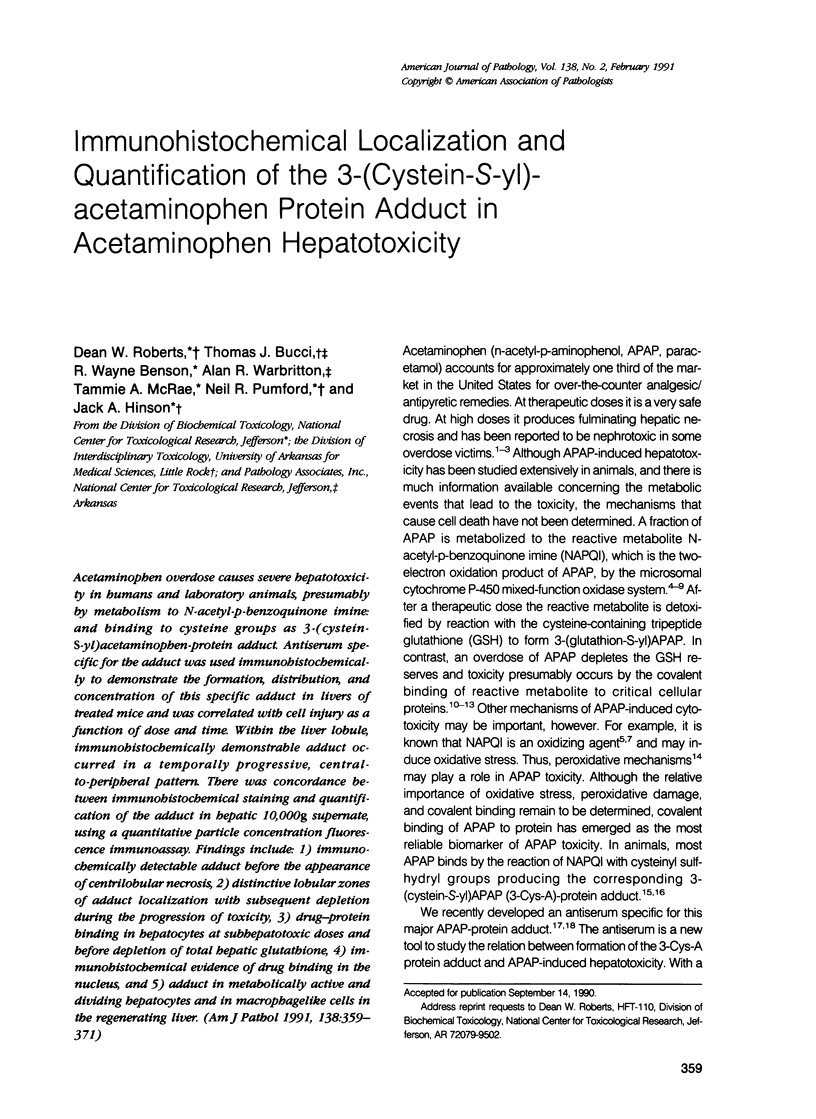
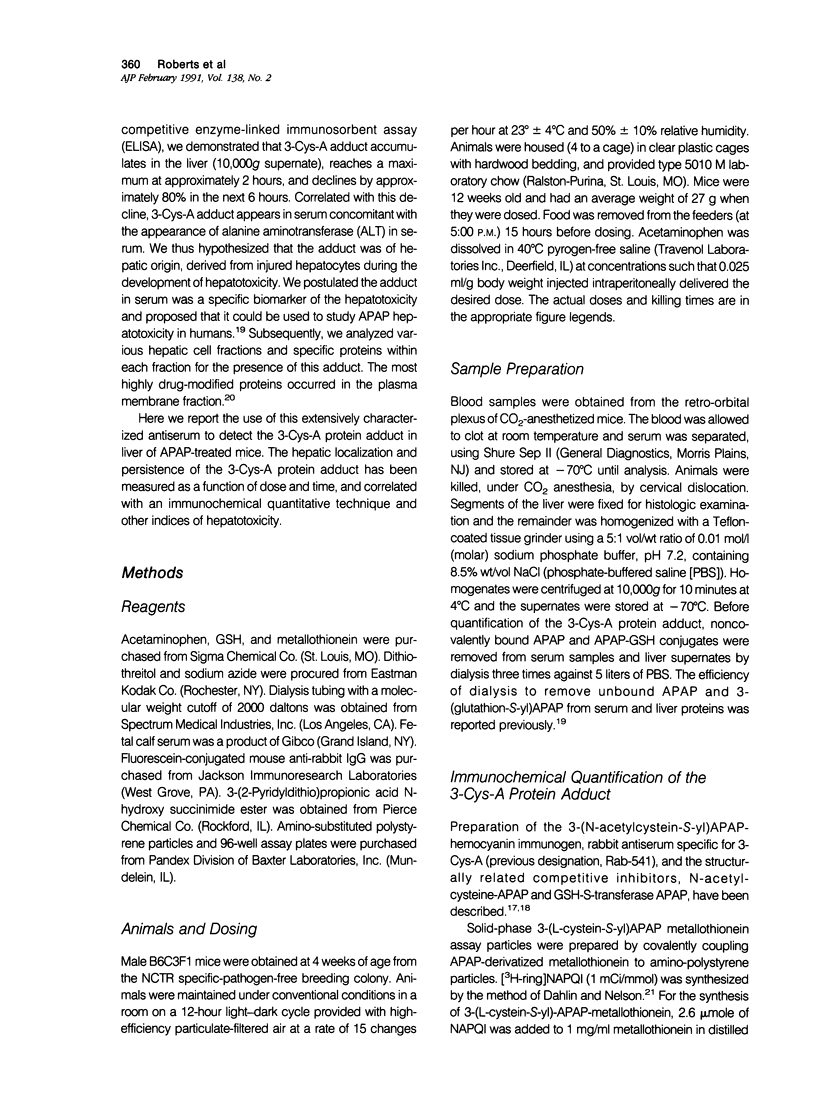
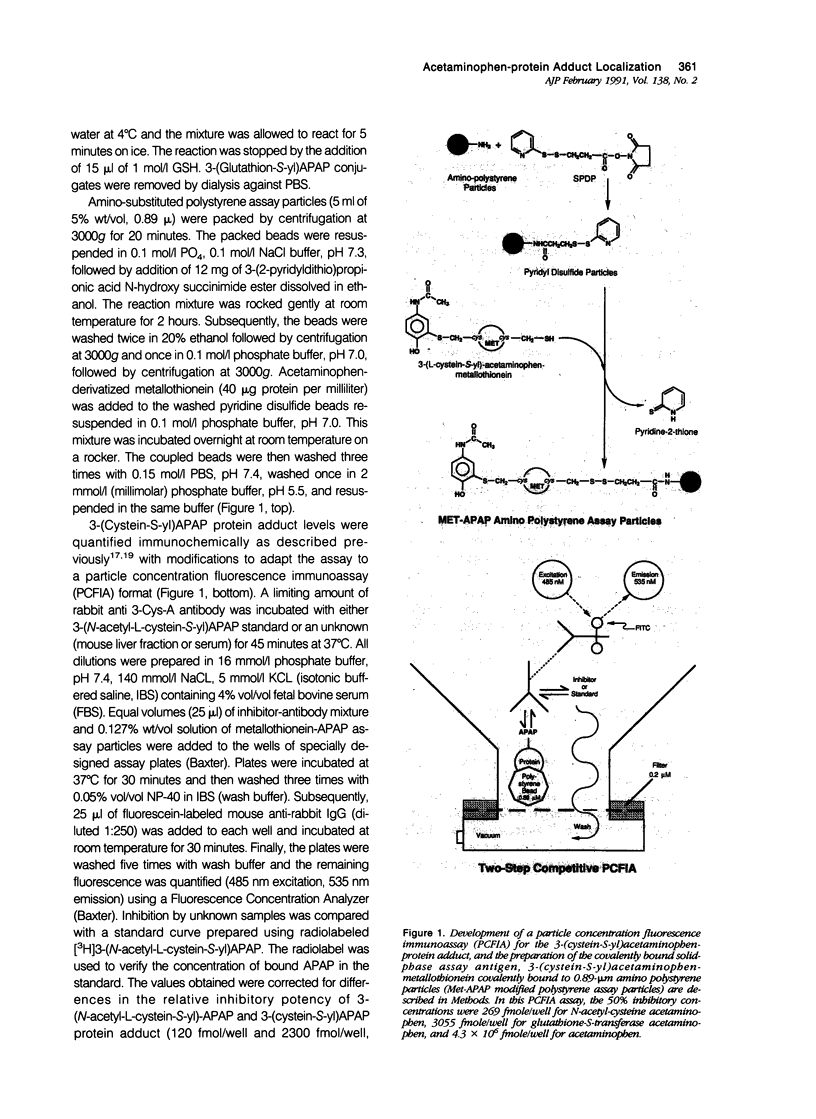
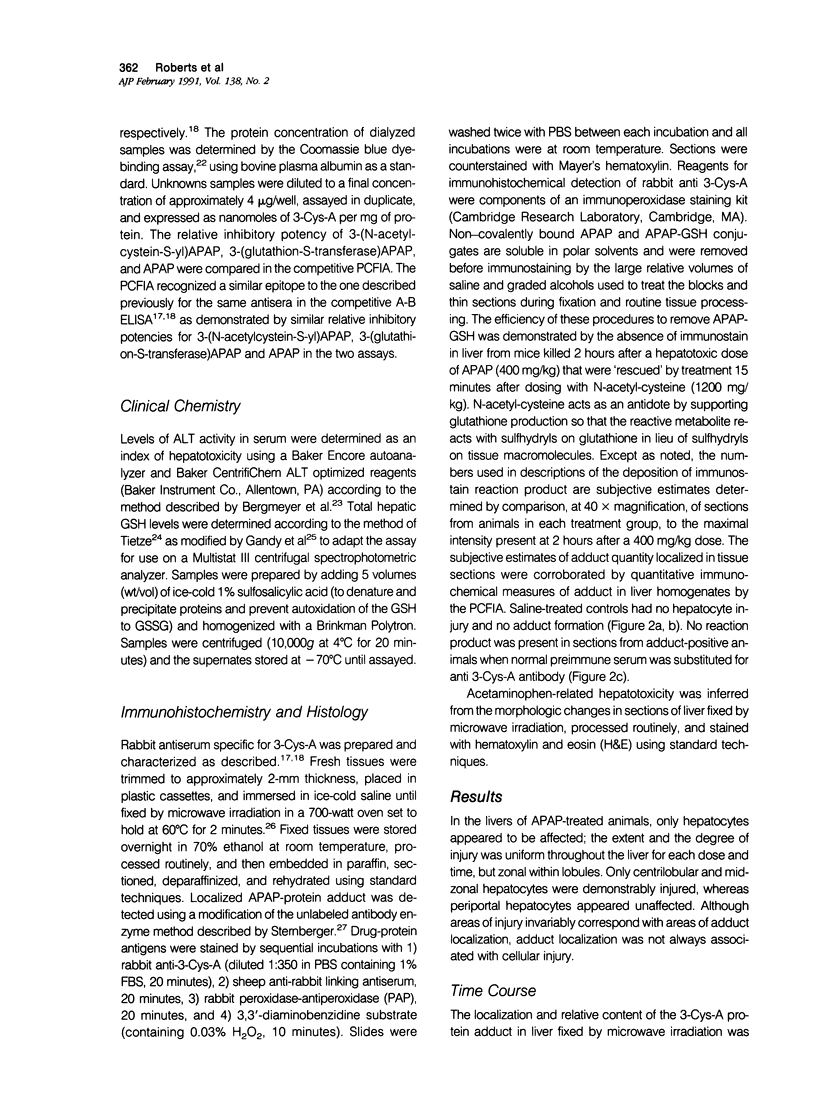
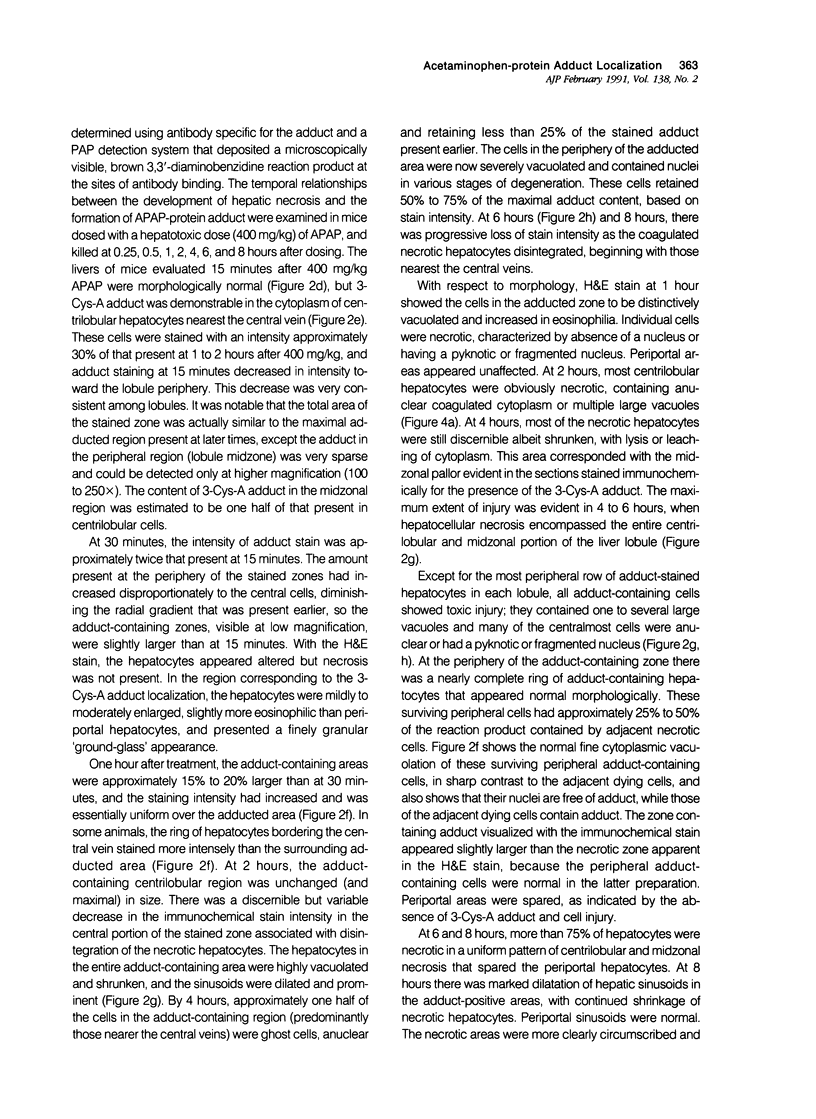
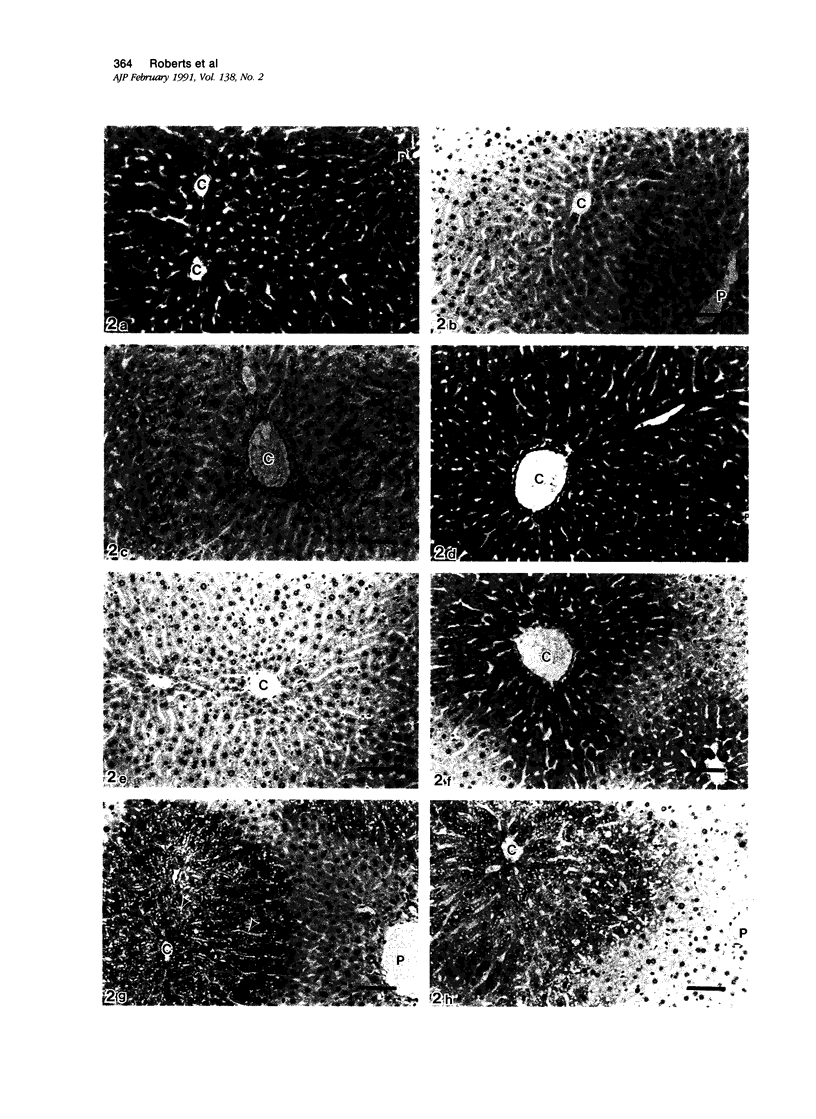
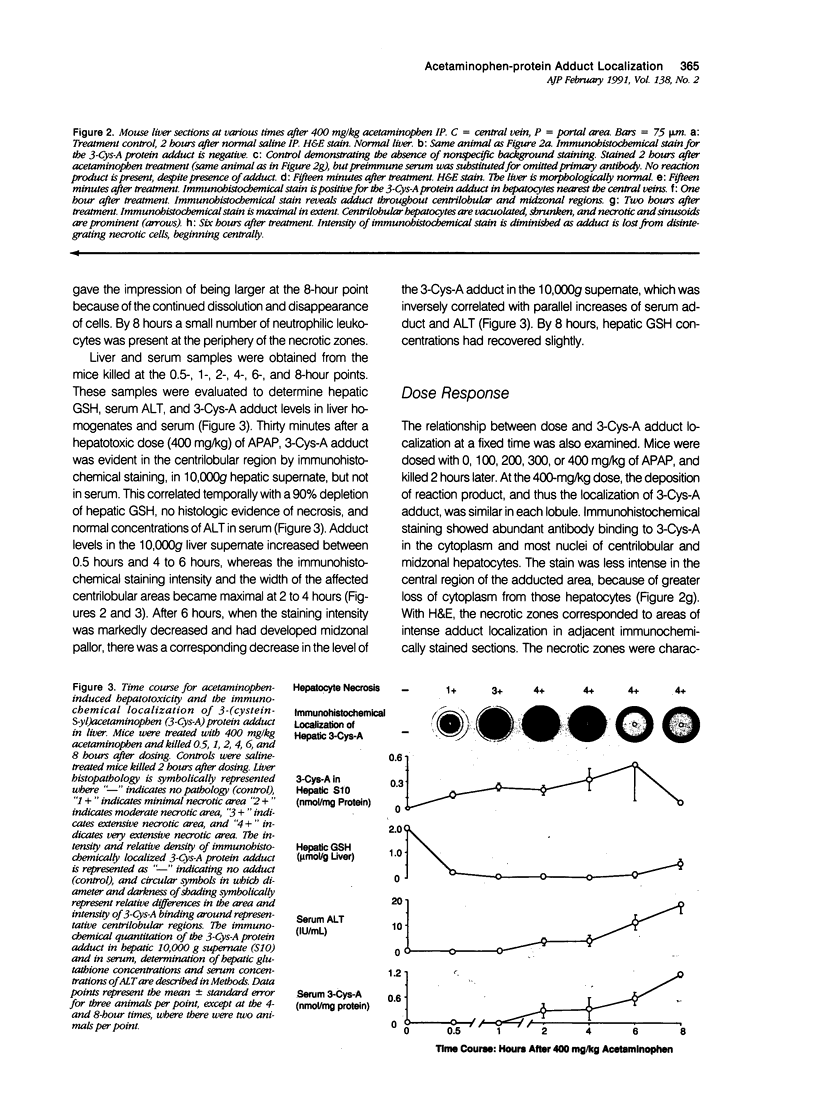
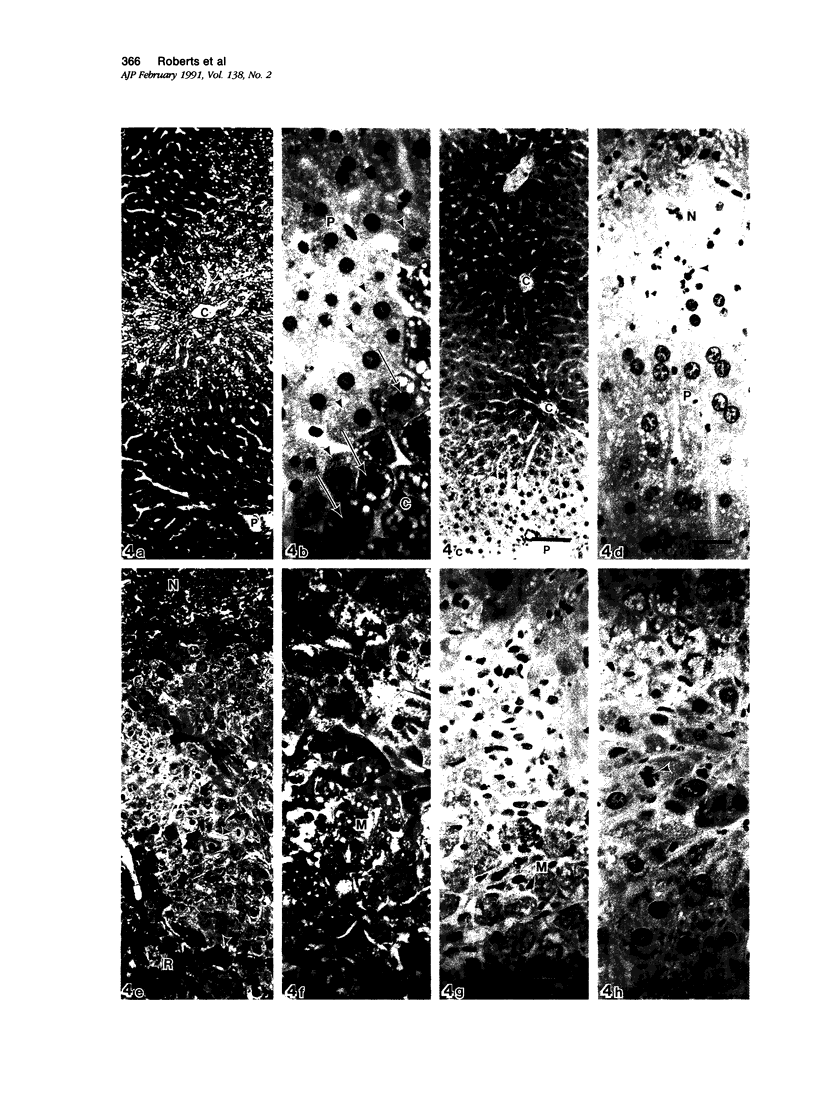
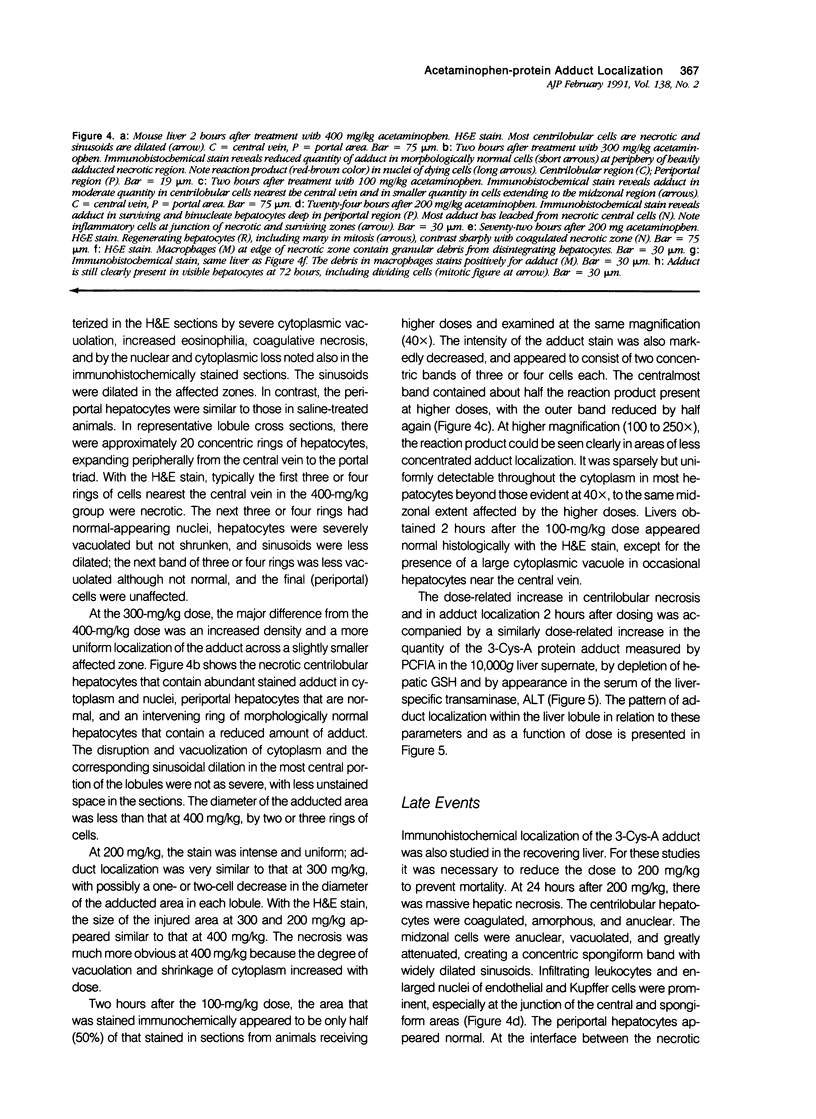
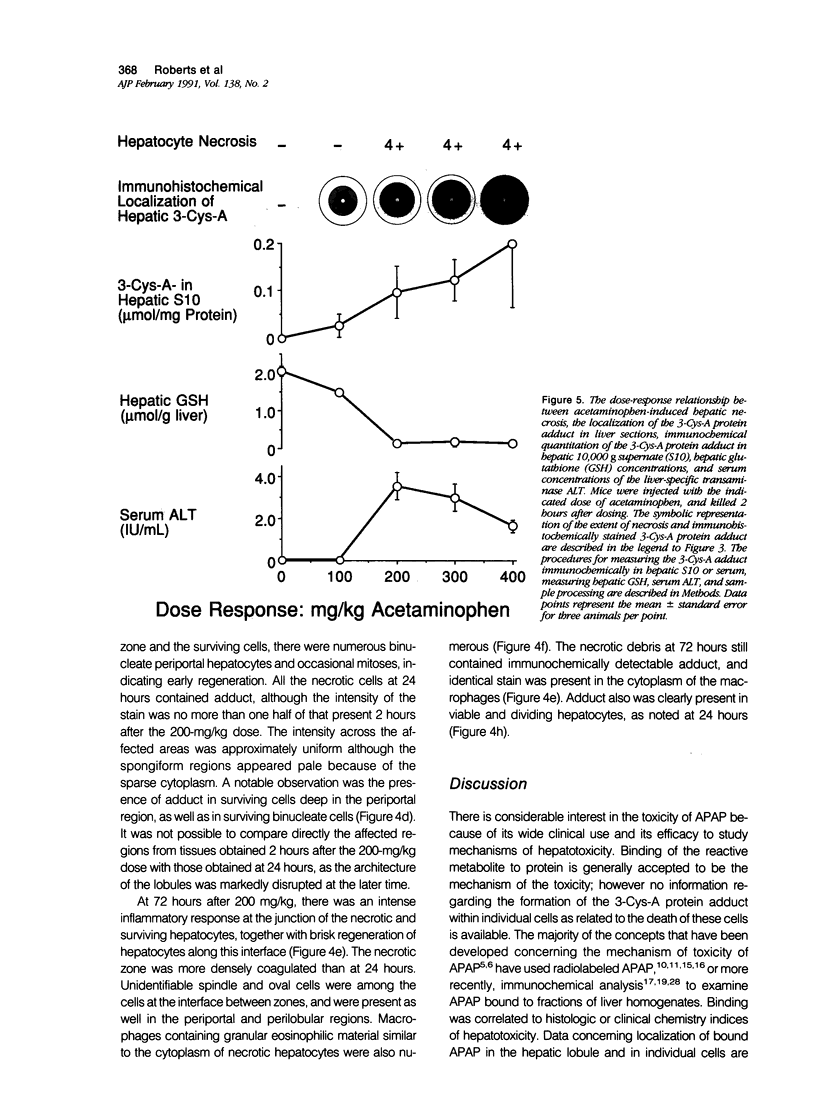
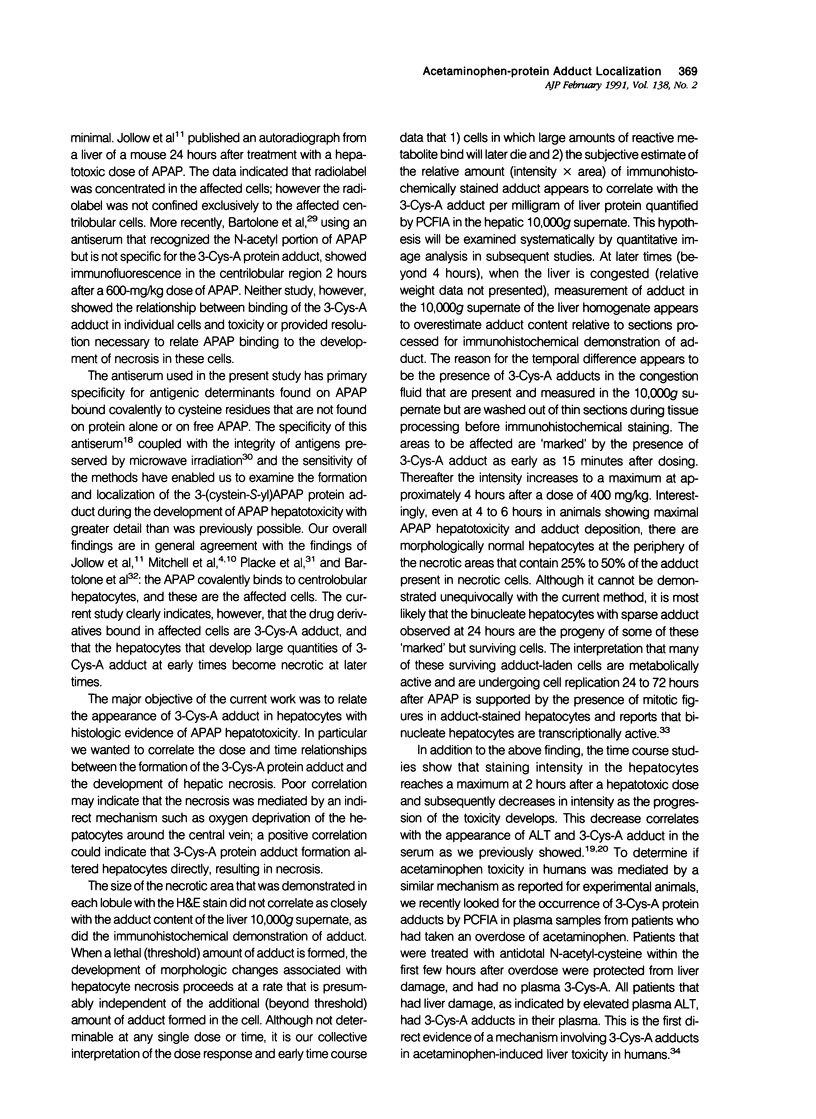
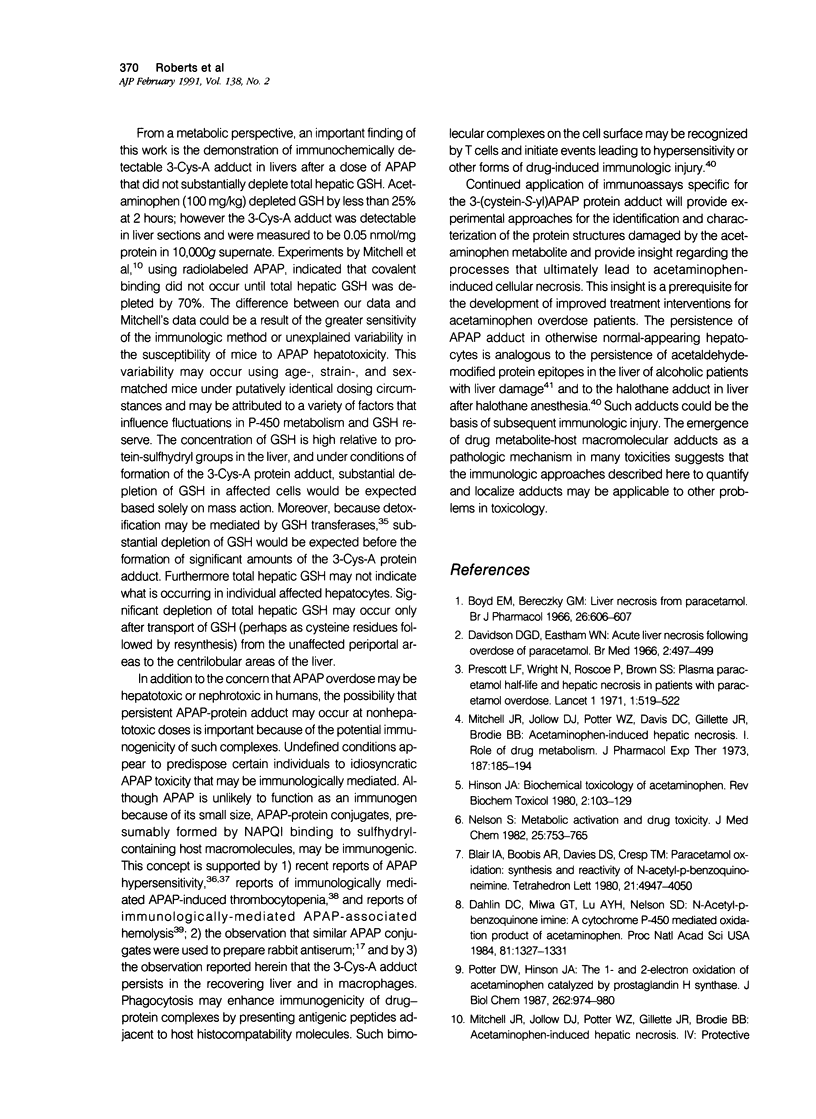
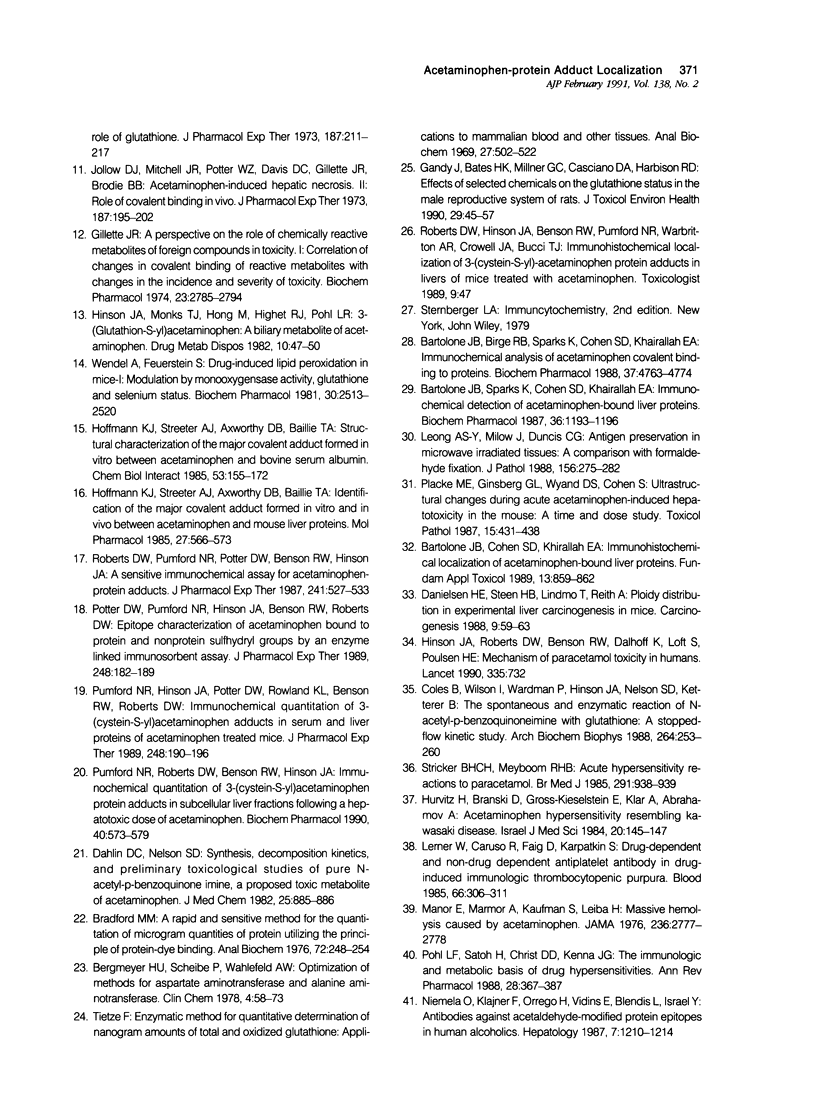
Images in this article
Selected References
These references are in PubMed. This may not be the complete list of references from this article.
- Bartolone J. B., Birge R. B., Sparks K., Cohen S. D., Khairallah E. A. Immunochemical analysis of acetaminophen covalent binding to proteins. Partial characterization of the major acetaminophen-binding liver proteins. Biochem Pharmacol. 1988 Dec 15;37(24):4763–4774. doi: 10.1016/0006-2952(88)90350-4. [DOI] [PubMed] [Google Scholar]
- Bartolone J. B., Cohen S. D., Khairallah E. A. Immunohistochemical localization of acetaminophen-bound liver proteins. Fundam Appl Toxicol. 1989 Nov;13(4):859–862. doi: 10.1016/0272-0590(89)90339-4. [DOI] [PubMed] [Google Scholar]
- Bartolone J. B., Sparks K., Cohen S. D., Khairallah E. A. Immunochemical detection of acetaminophen-bound liver proteins. Biochem Pharmacol. 1987 Apr 15;36(8):1193–1196. doi: 10.1016/0006-2952(87)90069-4. [DOI] [PubMed] [Google Scholar]
- Bergmeyer H. U., Scheibe P., Wahlefeld A. W. Optimization of methods for aspartate aminotransferase and alanine aminotransferase. Clin Chem. 1978 Jan;24(1):58–73. [PubMed] [Google Scholar]
- Boyd E. M., Bereczky G. M. Liver necrosis from paracetamol. Br J Pharmacol Chemother. 1966 Mar;26(3):606–614. doi: 10.1111/j.1476-5381.1966.tb01841.x. [DOI] [PMC free article] [PubMed] [Google Scholar]
- Bradford M. M. A rapid and sensitive method for the quantitation of microgram quantities of protein utilizing the principle of protein-dye binding. Anal Biochem. 1976 May 7;72:248–254. doi: 10.1016/0003-2697(76)90527-3. [DOI] [PubMed] [Google Scholar]
- Coles B., Wilson I., Wardman P., Hinson J. A., Nelson S. D., Ketterer B. The spontaneous and enzymatic reaction of N-acetyl-p-benzoquinonimine with glutathione: a stopped-flow kinetic study. Arch Biochem Biophys. 1988 Jul;264(1):253–260. doi: 10.1016/0003-9861(88)90592-9. [DOI] [PubMed] [Google Scholar]
- Dahlin D. C., Miwa G. T., Lu A. Y., Nelson S. D. N-acetyl-p-benzoquinone imine: a cytochrome P-450-mediated oxidation product of acetaminophen. Proc Natl Acad Sci U S A. 1984 Mar;81(5):1327–1331. doi: 10.1073/pnas.81.5.1327. [DOI] [PMC free article] [PubMed] [Google Scholar]
- Dahlin D. C., Nelson S. D. Synthesis, decomposition kinetics, and preliminary toxicological studies of pure N-acetyl-p-benzoquinone imine, a proposed toxic metabolite of acetaminophen. J Med Chem. 1982 Aug;25(8):885–886. doi: 10.1021/jm00350a001. [DOI] [PubMed] [Google Scholar]
- Danielsen H. E., Steen H. B., Lindmo T., Reith A. Ploidy distribution in experimental liver carcinogenesis in mice. Carcinogenesis. 1988 Jan;9(1):59–63. doi: 10.1093/carcin/9.1.59. [DOI] [PubMed] [Google Scholar]
- Davidson D. G., Eastham W. N. Acute liver necrosis following overdose of paracetamol. Br Med J. 1966 Aug 27;2(5512):497–499. doi: 10.1136/bmj.2.5512.497. [DOI] [PMC free article] [PubMed] [Google Scholar]
- Gandy J., Millner G. C., Bates H. K., Casciano D. A., Harbison R. D. Effects of selected chemicals on the glutathione status in the male reproductive system of rats. J Toxicol Environ Health. 1990;29(1):45–57. doi: 10.1080/15287399009531370. [DOI] [PubMed] [Google Scholar]
- Gillette J. R. Commentary. A perspective on the role of chemically reactive metabolites of foreign compounds in toxicity. I. Correlation of changes in covalent binding of reactivity metabolites with changes in the incidence and severity of toxicity. Biochem Pharmacol. 1974 Oct 15;23(20):2785–2794. doi: 10.1016/0006-2952(74)90052-5. [DOI] [PubMed] [Google Scholar]
- Hinson J. A., Monks T. J., Hong M., Highet R. J., Pohl L. R. 3-(glutathion-S-yl)acetaminophen: a biliary metabolite of acetaminophen. Drug Metab Dispos. 1982 Jan-Feb;10(1):47–50. [PubMed] [Google Scholar]
- Hinson J. A., Roberts D. W., Benson R. W., Dalhoff K., Loft S., Poulsen H. E. Mechanism of paracetamol toxicity. Lancet. 1990 Mar 24;335(8691):732–732. doi: 10.1016/0140-6736(90)90851-u. [DOI] [PubMed] [Google Scholar]
- Hoffmann K. J., Streeter A. J., Axworthy D. B., Baillie T. A. Identification of the major covalent adduct formed in vitro and in vivo between acetaminophen and mouse liver proteins. Mol Pharmacol. 1985 May;27(5):566–573. [PubMed] [Google Scholar]
- Hoffmann K. J., Streeter A. J., Axworthy D. B., Baillie T. A. Structural characterization of the major covalent adduct formed in vitro between acetaminophen and bovine serum albumin. Chem Biol Interact. 1985 Feb-Apr;53(1-2):155–172. doi: 10.1016/s0009-2797(85)80093-4. [DOI] [PubMed] [Google Scholar]
- Hurvitz H., Branski D., Gross-Kieselstein E., Klar A., Abrahamov A. Acetaminophen hypersensitivity resembling Kawasaki disease. Isr J Med Sci. 1984 Feb;20(2):145–147. [PubMed] [Google Scholar]
- Jollow D. J., Mitchell J. R., Potter W. Z., Davis D. C., Gillette J. R., Brodie B. B. Acetaminophen-induced hepatic necrosis. II. Role of covalent binding in vivo. J Pharmacol Exp Ther. 1973 Oct;187(1):195–202. [PubMed] [Google Scholar]
- Leong A. S., Milios J., Duncis C. G. Antigen preservation in microwave-irradiated tissues: a comparison with formaldehyde fixation. J Pathol. 1988 Dec;156(4):275–282. doi: 10.1002/path.1711560402. [DOI] [PubMed] [Google Scholar]
- Lerner W., Caruso R., Faig D., Karpatkin S. Drug-dependent and non-drug-dependent antiplatelet antibody in drug-induced immunologic thrombocytopenic purpura. Blood. 1985 Aug;66(2):306–311. [PubMed] [Google Scholar]
- Manor E., Marmor A., Kaufman S., Leiba H. Massive hemolysis caused by acetaminophen. Positive determination by direct Coombs test. JAMA. 1976 Dec 13;236(24):2777–2778. [PubMed] [Google Scholar]
- Mitchell J. R., Jollow D. J., Potter W. Z., Davis D. C., Gillette J. R., Brodie B. B. Acetaminophen-induced hepatic necrosis. I. Role of drug metabolism. J Pharmacol Exp Ther. 1973 Oct;187(1):185–194. [PubMed] [Google Scholar]
- Nelson S. D. Metabolic activation and drug toxicity. J Med Chem. 1982 Jul;25(7):753–765. doi: 10.1021/jm00349a001. [DOI] [PubMed] [Google Scholar]
- Niemelä O., Klajner F., Orrego H., Vidins E., Blendis L., Israel Y. Antibodies against acetaldehyde-modified protein epitopes in human alcoholics. Hepatology. 1987 Nov-Dec;7(6):1210–1214. doi: 10.1002/hep.1840070607. [DOI] [PubMed] [Google Scholar]
- Placke M. E., Ginsberg G. L., Wyand D. S., Cohen S. D. Ultrastructural changes during acute acetaminophen-induced hepatotoxicity in the mouse: a time and dose study. Toxicol Pathol. 1987;15(4):431–438. doi: 10.1177/019262338701500407. [DOI] [PubMed] [Google Scholar]
- Pohl L. R., Satoh H., Christ D. D., Kenna J. G. The immunologic and metabolic basis of drug hypersensitivities. Annu Rev Pharmacol Toxicol. 1988;28:367–387. doi: 10.1146/annurev.pa.28.040188.002055. [DOI] [PubMed] [Google Scholar]
- Potter D. W., Hinson J. A. The 1- and 2-electron oxidation of acetaminophen catalyzed by prostaglandin H synthase. J Biol Chem. 1987 Jan 25;262(3):974–980. [PubMed] [Google Scholar]
- Potter D. W., Pumford N. R., Hinson J. A., Benson R. W., Roberts D. W. Epitope characterization of acetaminophen bound to protein and nonprotein sulfhydryl groups by an enzyme-linked immunosorbent assay. J Pharmacol Exp Ther. 1989 Jan;248(1):182–189. [PubMed] [Google Scholar]
- Prescott L. F., Roscoe P., Wright N., Brown S. S. Plasma-paracetamol half-life and hepatic necrosis in patients with paracetamol overdosage. Lancet. 1971 Mar 13;1(7698):519–522. doi: 10.1016/s0140-6736(71)91125-1. [DOI] [PubMed] [Google Scholar]
- Pumford N. R., Hinson J. A., Potter D. W., Rowland K. L., Benson R. W., Roberts D. W. Immunochemical quantitation of 3-(cystein-S-yl)acetaminophen adducts in serum and liver proteins of acetaminophen-treated mice. J Pharmacol Exp Ther. 1989 Jan;248(1):190–196. [PubMed] [Google Scholar]
- Pumford N. R., Roberts D. W., Benson R. W., Hinson J. A. Immunochemical quantitation of 3-(cystein-S-yl)acetaminophen protein adducts in subcellular liver fractions following a hepatotoxic dose of acetaminophen. Biochem Pharmacol. 1990 Aug 1;40(3):573–579. doi: 10.1016/0006-2952(90)90558-3. [DOI] [PubMed] [Google Scholar]
- Roberts D. W., Pumford N. R., Potter D. W., Benson R. W., Hinson J. A. A sensitive immunochemical assay for acetaminophen-protein adducts. J Pharmacol Exp Ther. 1987 May;241(2):527–533. [PubMed] [Google Scholar]
- Stricker B. H., Meyboom R. H., Lindquist M. Acute hypersensitivity reactions to paracetamol. Br Med J (Clin Res Ed) 1985 Oct 5;291(6500):938–939. doi: 10.1136/bmj.291.6500.938. [DOI] [PMC free article] [PubMed] [Google Scholar]
- Tietze F. Enzymic method for quantitative determination of nanogram amounts of total and oxidized glutathione: applications to mammalian blood and other tissues. Anal Biochem. 1969 Mar;27(3):502–522. doi: 10.1016/0003-2697(69)90064-5. [DOI] [PubMed] [Google Scholar]
- Wendel A., Feuerstein S. Drug-induced lipid peroxidation in mice--I. Modulation by monooxygenase activity, glutathione and selenium status. Biochem Pharmacol. 1981 Sep 15;30(18):2513–2520. doi: 10.1016/0006-2952(81)90576-1. [DOI] [PubMed] [Google Scholar]



